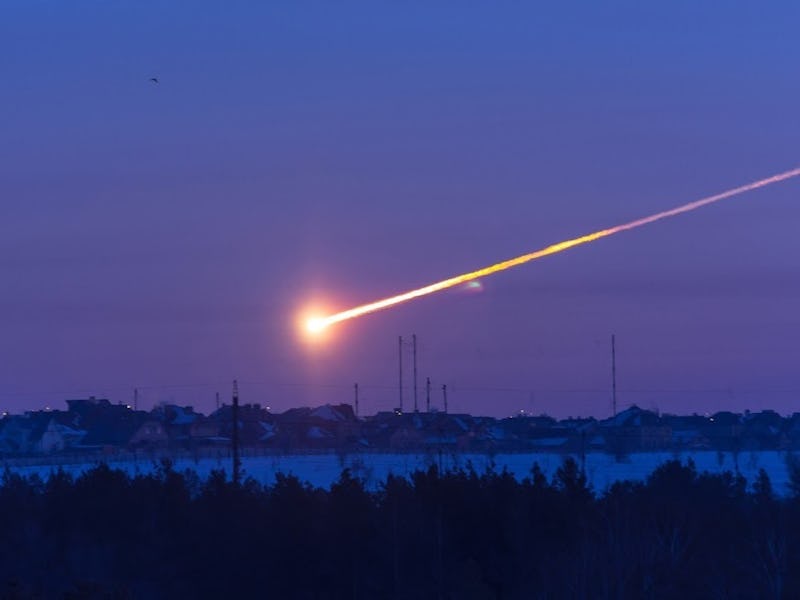NASA Reveals its Plan for Protecting Earth From Falling Space Crap
Will we be ready if the time comes?

It’s better to have a plan for when rocks hurtle toward Earth and not need it than to need a plan and not have it. With this in mind, the National Science and Technology Council on Wednesday announced its National Near-Earth Object Preparedness Strategy and Action Plan, a report detailing the moves that can be made in advance of, and in response to, the unlikely event of a near-Earth object like an asteroid or a meteor threatening to strike Earth. And while government officials have not revealed an Armageddon-style plan to send deep-sea oil drillers into space to stop impending asteroids, they did something almost as good: They published a report!
In the report, officials from NASA’s Planetary Defense Coordination Office, the White House Office of Science and Technology Policy, and the Federal Emergency Management Agency outline what they’ve already done to minimize the chances of a space-borne apocalypse, as well as what could be done if a big-ass rock does wander our way.
For over a decade, NASA astronomers have worked to catalog all the near-Earth objects more than 140 meters across in an effort to keep tabs on the big space rocks that would do the most damage if they entered our atmosphere. This is part of an effort, directed by Congress in 2005, to find all the 140-meter-or-greater NEOs by 2020. And it’s going pretty well. The new report said that “the number of NEOs catalogued in this range has almost tripled, while the total number of catalogued NEOs has increased by almost five times” since 2005.
And while NASA officials are confident that they’ve identified all of the NEOs big enough to really mess up the Earth and determined that they are not on collision courses with Earth, there’s always the chance that a comet could appear from way outside the solar system and only give us a few months warning before it hits Earth. If that happens, there are three main strategies that we could use to prevent a catastrophic NEO collision: a kinetic impactor, a gravity tractor, or a nuclear device. Here’s how each one would work:
Gravity Tractor
A gravity tractor is the most gentle way we could divert a dangerous object from hitting Earth. Basically, we’d send a satellite into orbit around the object and use the satellite to gradually divert the path of the asteroid or comet. Unfortunately, as Inverse previously reported, this method wouldn’t work on anything bigger than 500 meters across.
Kinetic Impactor
A kinetic impactor is pretty much what it sounds like: some kind of uncrewed spacecraft that would collide with the offending object to knock it off its course. Unfortunately, we don’t have one ready to deploy yet. And even if we did, it would require at least a year of warning time.
Nuclear Device
Okay this one sounds dope, but again, it’s not like in Armageddon. “That would not be used necessarily to blow the asteroid up,” NASA Planetary Defense Officer Lindley Johnson told reporters on Wednesday. The idea of a nuclear device would be to superheat the surface of an asteroid or comet and hopefully blow off some material to reduce its mass while also pushing it off course.
Long story short, it may be hard to actually stop an asteroid from hitting Earth, despite Johnson’s assurance that, “The technology is … mature enough that we could mount a deflection mission.”
This is why FEMA is part of this preparedness strategy. At that point, it’s all about damage control. “Effective emergency procedures can save lives and mitigate damage to critical infrastructure,” reads the report. The good news is that the likelihood of a catastrophic asteroid impact is pretty low. The bad news is that the dinosaurs showed us just how bad it could be.